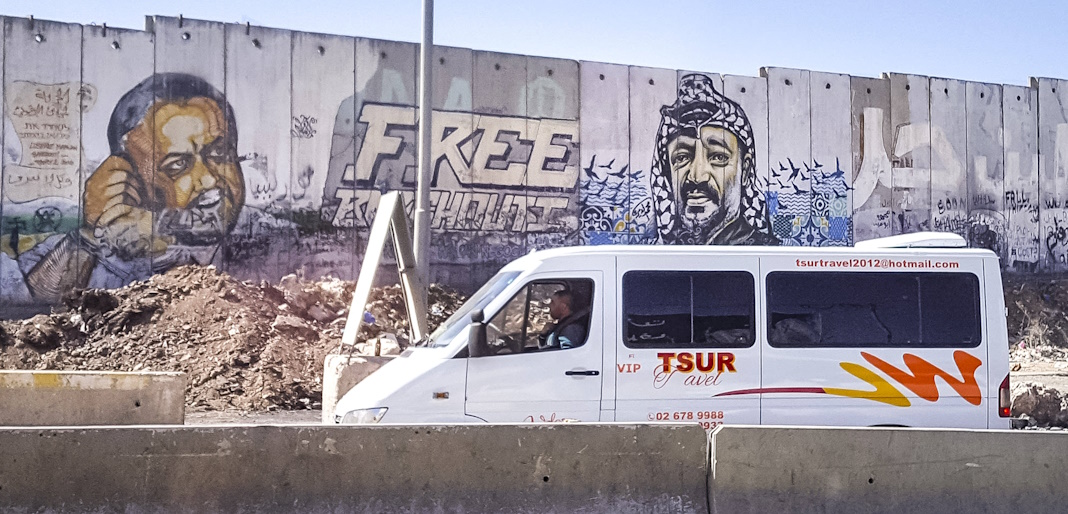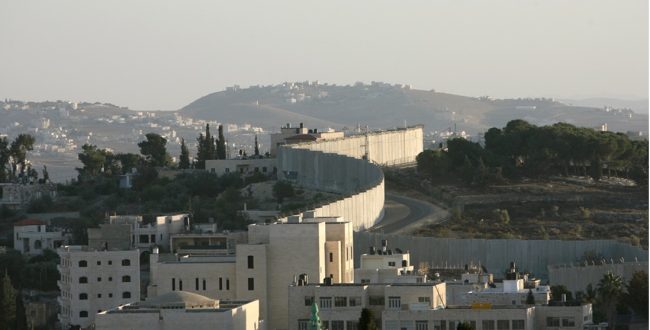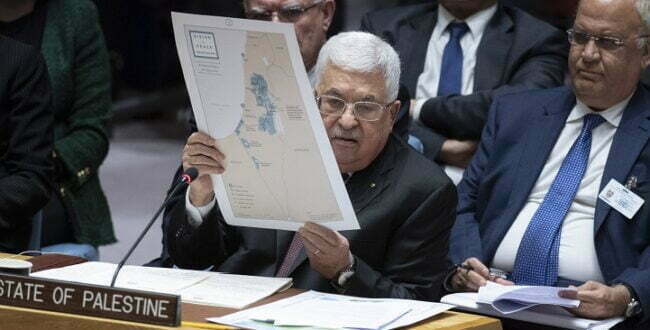Israeli-Palestinian peace based on equal self-determination, an end to the Israeli occupation and the establishment of an independent Palestinian state alongside Israel — these principles form the only hopeful alternative to the current reality for all people living between the Jordan River and the Mediterranean Sea. Especially in these difficult times, this approach represents the only avenue towards a pragmatic and secure future over cycles of death and endless war.
However, the principle of mutual, equal, self-determination for both peoples currently has the lowest rates of public support in decades, according to consistent survey findings among both Israelis and Palestinians. Among Palestinians, thirty years of failed peace talks have caused the public to lose faith in “the peace process. ” Most now view any talk of two states as empty or even a ruse. Among the Israeli public, the horrific events of October 7th led to an eruption of trauma and vengeful sentiments, alongside feelings of fear and distrust on an unprecedented scale. An ever-growing number of Israelis now believe the conflict to be unsolvable. Yet for both publics, trust in a peace process and a fair solution had been declining for years prior to the current conflict. Leaders believe that talking about this path would constitute political suicide.
In an atmosphere of existential fear for both Israelis and Palestinians, the notion that a public persuasion campaign in the form of banners, advertisements, op-eds and high profile endorsements convince the public to shed their fear, anxiety and mistrust does not reflect reality. We must acknowledge that no peace process will receive prima facie support of the general public. The success of such an endeavor depends on local and international leaders who grasp the fundamental, long-term interests of each group, and are willing to promote a final status resolution, clearly, and courageously. Without such leadership, the chances that either side will free itself from this vicious cycle of bloodshed are close to zero.
For current international efforts to bring about a lasting peace agreement to succeed, their advocates must learn from past experience of the last thirty years. The lesson should account for both pitfalls and mistakes, in order to revise strategies for the future. In the first part of this article, we present the two fundamental failures that have characterized past international efforts. In the second part, we propose a new vision for international intervention, which is critical to the effort to lift both peoples out of the current emergency. This intervention can help carve a path towards a viable, permanent political resolution.
Past Mistakes
From the Oslo Accords of the 1990s to the last formal Israeli-Palestinian negotiations between 2013 and 2014, two main issues have undermined the success of internationally-led efforts for Israeli-Palestinian peace.
First, despite their declared commitment to the two-state solution, international actors have effectively tolerated repeated Israeli and Palestinian actions to sabotage the establishment of a viable Palestinian State in the West Bank and Gaza Strip. Other than rhetorical admonitions, the international community has effectively turned a blind eye to the mass expansion of settlements in the West Bank, the ongoing siege of the Gaza Strip since 2007, and the overarching Israeli “divide and conquer” policy. This refers specifically to Benjamin Netanyahu’s policy of strengthening, financing and stabilizing Hamas rule in Gaza on the one hand, while weakening the Palestinian Authority (PA) on the other — back when the PA still enjoyed a measure of public legitimacy, and was willing to advance an agreement with Israel.
Thus, the international community also tolerated the armament and consolidation of power by Hamas in Gaza, as well as the authoritarianism and corruption that have proliferated both within Hamas in Gaza and the PA in the West Bank. This dynamic has contributed heavily to the erosion of trust in Palestinian leadership and its diminishing legitimacy among both Palestinians and Israelis.
With no faith in a political resolution, the Israeli leadership turned to a policy of “managing” or “shrinking” the conflict; in truth, this meant letting the conditions for conflict fester. Predictably, Palestinians came to despair of ever ending the occupation and achieving statehood; and increasingly channeled their despair into support for a violent struggle. While the attack on October 7 was a shock, no serious observer could have been surprised that these conflicting conceptions led to violent collisions.
Second, the prominent paradigm for peace, beginning with the Oslo process, was grounded in the principle of ethno-national segregation. This paradigm failed, because such segregation is unattainable, due to the intense intermixing of Israeli-Jews and Palestinian-Arabs across the entire territory. It has become clear over the years that a separation paradigm perpetuates and deepens the feeling on each side that the other represents an existential threat. In this frame of mind, no matter what peace agreements emerge, the other side will continue to represent an existential threat that must be confined behind a barrier. This image reinforces distrust between the parties.
A separation paradigm demands that Palestinians and Jews should not interact, that each should isolate itself as the ideal solution. Accordingly, this solution hinges on evacuating between 115,000 to 175,000 Jewish Israelis living in settlements deep within the territory of the West Bank, while erecting barriers, tunnels and bridges to generate artificial territorial separation within Jerusalem. The division of Jerusalem would prevent movement between the two parts of the city – a deep disruption of the current urban, economic, social and physical urban geography.
Forced evacuation of the Israeli settler population, and the physical division of the Jerusalem metropolitan will face harsh resistance from within the Israeli public. No less worrying, they will deepen distrust between the two peoples still further, and strengthen positions such as those of former minister Avigdor Liberman. For years, Liberman has promoted the ideal of Jewish-Palestinian segregation to the point of stripping the citizenship of a large portion of Arab citizens. The plan would thereby undermine the civic status of all Palestinian-Arab citizens of Israel; his vision entails a call for their forcible political (if not physical) transfer, in whole or in part, to a future Palestinian state. In our opinion, the persistence of a separation and segregation paradigm for peace, predicated on the complete evacuation of Jewish-Israelis from the territory of a Palestinian state — undermine the efforts for peace. These are destined to fail even before the process has begun.
Hence, we propose a new policy for a future peace that holds actual potential to bring about a political resolution; while laying out the essential interim steps needed to reach this aim.
Starting From the End: a Comprehensive “Package Deal” with International Support
The only pragmatic answer to the current emergency is a comprehensive package deal that addresses the legitimate interests of both Israelis and Palestinians in the short, medium and long terms. These phases are deeply interrelated.
The comprehensive, long term vision cannot yield to the fundamentalist, theocratic and violent goals of Hamas on the one hand, or the extremist, messianic, violent far-right wing Israeli parties on the other. Their visions not only include more warfare, bloodshed and nihilism – they are fundamentally zero-sum approaches. We firmly reject zero-sum solutions whereby the realization of one party’s vision depends on the annihilation of the other. Those who uphold such positions will not find this proposal satisfactory and it is the responsibility of each community to transform, co-opt or contain these political forces from within.
For the immediate future, the international community must advance a ceasefire as urgently as possible, on the basic terms that all Israeli hostages in Gaza must be released, Israel must allow all needed humanitarian aid to avoid worsening the complete catastrophe in Gaza; this must be stopped.
The Israeli public, for its part, must have assurance that the violence and atrocities committed on the 7th of October will never be repeated.
Other than a temporary ceasefire that might last for a number of weeks, none of these aims will be attainable in isolation of a long-term horizon for political change.
Therefore, the deep causes of the conflict must be addressed by adopting fundamental principles that will guide the permanent arrangements: (1) mutual security for Israelis and Palestinians; (2) equal right to self-determination, (3) a viable Palestinian state alongside the State of Israel, and (4) the protection of human rights of all people in the land. To address these aims, a comprehensive “package deal” must include the following four core elements:
- International Recognition of a Palestinian State
Over the course of three decades of peace talks, the concept of “constructive ambiguity” allowed both sides to construe the process in different and even conflicting ways. On the ground however, Israel continued to deploy various mechanisms to prevent the emergence of two states. The Deal of the Century proposed by the Trump administration in 2020 backed the Israeli position, and thus deepened the Palestinian mistrust for the internationally-arbitrated peace process.
Recognition of a Palestinian state in accordance with international law, consistent with the Arab Peace Initiative of 2002 would put to rest the question of the final status. Such recognition may not provide substantive sovereignty at first, but it signals an aim to advance true sovereignty. Most importantly, recognition ensures that all sides are working towards a unified goal.
Adopting this goal early on will put an end to the aspirations of extremist factions in Israel claiming exclusive sovereignty of the Jewish people over Greater Israel. As we know, such aspirations entail the permanent Israeli control over the Gaza Strip and the reestablishment of settlements there, as well as full takeover of the West Bank. Both would include expulsion of Palestinians from those areas, and in certain ways, this is already happening. On the Palestinian side, recognition of the two-state solution will put an end to the exclusivist vision “from the River to the Sea” — a charged slogan that is understood by Jewish Israelis to mean the eradication of the State of Israel.
- Transfer of Power to New Leadership in Palestine and Israel
Although the Palestinian political arena is far from being a functioning democracy, there are unfortunately many similarities to the current Israeli political arena. After many years of fragmented and corrupt politics that mainly served the personal advancement of leaders, rather than their constituents they are meant to serve — both the Israeli and the Palestinian public deserve a new leadership. Only a new leadership committed to the general good can lead Israel and Palestine toward a viable future.
The new Palestinian leadership that will take on the governing responsibilities of Hamas in Gaza and the PA in the West Bank must be united, representative, and accountable to the entirety of the Palestinian population in the West Bank, Gaza and East Jerusalem. This leadership should encompass a wide range of Palestinian standpoints from all these territories. Israel too needs a new leadership, one that rejects the untenable, illegal and immoral notion of permanent military control and political suppression of Palestinians by force, for maximalist messianic aims.
- Breaking with the goal of separation : Two States in a Confederation
At a basic level, it bears acknowledgment that partitioning the land into two states — Israel and Palestine — is still the basis for a viable and lasting political resolution. But even the 1947 UN General Assembly Resolution 181 – “the partition plan” presumed that neither state would be purely homogenous, that Jews and Arabs would remain on either side of the border, and that the two states will form a shared economic union. By contrast, the Oslo process set in motion a distinct approach to peace based on antagonistic separation: or “We’re= here; they’re there,” as Ehud Barak famously said. The entire modern peace process from the 1990s onward shifted to a paradigm of achieving the maximum possible ethno-national, demographic segregation.
However, due to Israeli settlement policy in precisely those territories putatively slated for “separation” (settlements only intensified in the years following the Oslo Accords and the Second Intifada), at present such separation has become impossible in practice. Segregating Israeli-Jews from Palestinian-Arabs would mean the forced removal of between 115,000 to 175,000 Israelis, some of whom are second or even third generations of people who were born in their homes.
There is no question that Israeli settlement policy in the Occupied Territories is a violation of international law. However, those civilians did not initiate the violations, and cannot be blamed exclusively for them. Indeed, predicating the entire future of peace on a process very much akin to expulsion raises political, moral and even legal problems. It also ensures resentment within Israeli society towards such a process for years to come – and not only from the settlers themselves but after decades of normalizing settlements, resentment will flow from large portions of Israeli Jewish society in general.
For these reasons, forced evacuation of the Israeli Jews that reside in these territories poses a seemingly insurmountable political barrier. Further, a policy of separation in Jerusalem will require extensive efforts to surgically demarcate populations and neighborhoods which are already deeply interwoven, including economically. The physical division alone in Jerusalem will entail complex, disruptive and expensive efforts to re-engineer infrastructure, a process that would take decades, cost millions and which will severely disrupt urban economic, social and cultural activity. Despite such efforts, the city will never truly achieve complete partition. The separation approach will generate vast anger among both Israelis and the Palestinians of East Jerusalem, who will be the most negatively and immediately affected. In the long term, this approach will likely entrench the animosity between the two sides, further threatening any possibility of a peaceful future.
A renewed two-state solution must still assume that the starting point is partition of the land into two-states, to be realistic. But partition is distinct from separation and segregation. Partition can rely on cooperation between the two entities — multi-level partnerships that are necessary in any case to handle urgent mutual needs regarding economy, security, public health, infrastructure, environment/climate crisis as well as in safeguarding the rights of the respective minority groups residing within each entity.
Such cooperation will allow Jewish-Israeli settlers to choose to take up residency in a future Palestinian state, if they are law abiding and accept the sovereignty of Palestine – because there will be organic, built-in policies for guaranteeing their security if they choose to stay. In turn, their presence as residents within a Palestinian state will enhance the Israeli interest in securing the political stability. as well as upholding the functioning of the Palestinian state.
In Jerusalem, cooperation between the two states means replacing the notion of physical division of the city with a framework for an open city, serving as the capital of both states.
We are aware that in the current state of affairs, such arrangements based on close cooperation and trust-based relations seem unimaginable. And yet, that presumption neglects realities that already exist despite the despairing environment. Where this type of exposure and de facto cooperation exists, too often it occurs in the context of inequality, Israeli dominance and occupation. The aim is to transform the situation to one of equality and partnership, to implement similar forms of mutual interdependence that exist today – but for the benefit of both populations, equally.
Among the various alternatives, not only is this framework the only realistic and plausible one that does not raise legal or ethical obstacles; it also directs the peacebuilding efforts of the present in a constructive direction for the future — building equality-based trust between the two parties which is arguably the single most important factor for ensuring lasting peace in this small patch of land. In order to overcome the initial distrust and improve the chances of success, the transition to an independent Palestinian state must be supported by an international interim task-force.
- The Bridge: a Temporary, transitional UN Led Task-Force in the West Bank and Gaza Strip
The two parties are in such a belligerent and escalatory dynamic at present, that international intervention will be needed in the short-term to help stabilize conditions. Neither side will be completely satisfied but both can accept the need for such direct international presence. One role is to help stabilize the situation in Gaza and the West Bank, and ensure the safety of the Palestinians and Israelis in these territories, through international guarantees of ceasefire terms.
At that point, it is imperative that a temporary international task-force invest in two overarching goals: 1) A viable, robust Palestinian state that will be willing and capable of representing and serving all its citizens, Palestinian Muslims and Christians as well as Jewish Israeli residents; 2) establishing joint authorities necessary for managing shared issues of economy, security, water/natural resources, waste management, environment and health between the two states. The temporary taskforce must be operated by the UN, mandated by the Security Council and in accordance with Chapter 7 of the UN charter, working together with both the Israeli and Palestinian governments.
The international task force must focus its efforts on the following three aspects: rehabilitation, especially of the Gaza Strip; development of crucial public services such as health, education, welfare and transportation throughout the Palestinian territories. The task force must insist on treating Gaza and the West Bank as a unified social and political territory; and the establishment of cooperative entities dedicated to the areas of life that both parties have an interest in overseeing. These include, as mentioned, security, health, natural resources, environment and economy, or other areas as the parties see fit. The temporary UN task-force will be defined with an end date, by which time responsibilities will be gradually transferred to the Palestinian national leadership.
A Package Deal: Steady Progress Towards Independent Statehood
Israelis, Palestinians and the international community face dire and inevitable consequences if the war continues indefinitely, or, conversely, if the parties return to the status quo ante before October 7. A viable political resolution must address the legitimate and fundamental needs of each side, and is contingent upon the adoption of a realistic model of a two-state solution based on cooperation rather than separation. Given the physical, political and mental conditions in Israel-Palestine at this moment in time, there is great urgency for intervention and involvement of the international community. Only such intervention can disentangle the two nations from the ongoing cycle of bloodshed that appears to have no end in sight, and is threatening to bring them and the entire region down into further disaster.

















